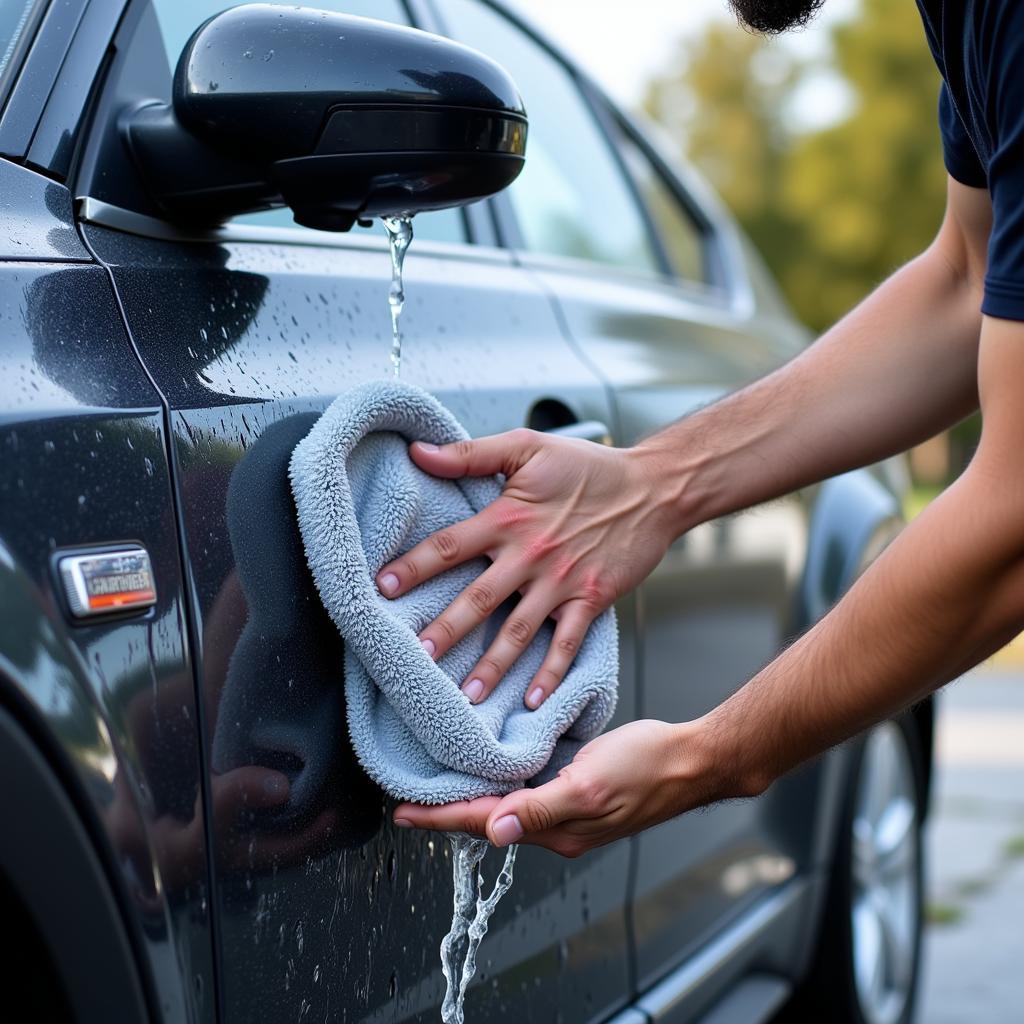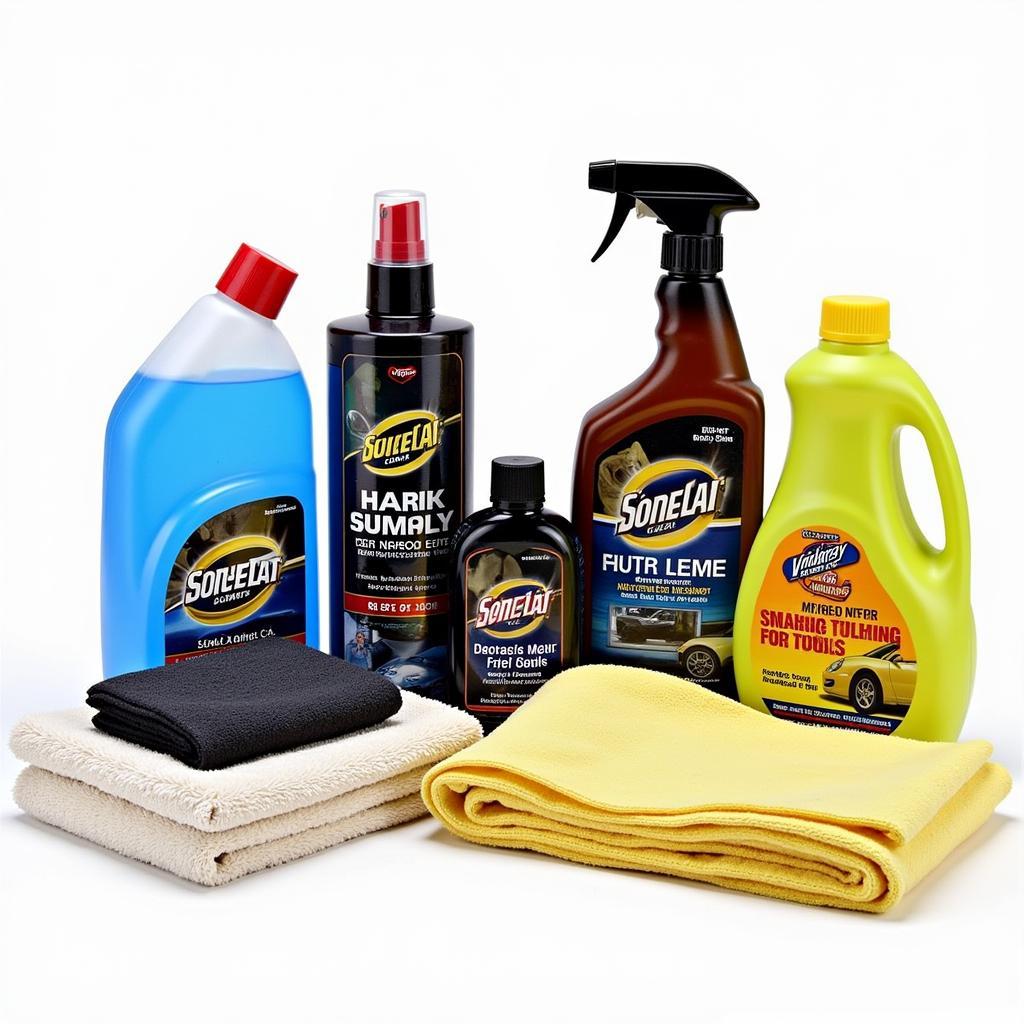A freshly detailed car is a thing of beauty, its paint gleaming like a mirror and the interior immaculate. But after investing time and money in this meticulous process, it’s natural to wonder: when is it safe to wash your car without jeopardizing the results? Let’s delve into the factors affecting wash times and give you a definitive answer.
The Detailing Process: Understanding the Timeline
Detailing involves much more than a simple wash and vacuum. It’s a multi-step process encompassing:
- Pre-Wash: Loosening dirt and grime with specialized cleaners.
- Wash: A gentle two-bucket method to minimize swirl marks.
- Decontamination: Removing embedded contaminants like iron particles and tree sap.
- Polishing: Smoothing the paint surface to remove imperfections and enhance gloss.
- Protection: Applying sealant or wax to shield the paint from the elements.
- Interior Detailing: Thorough cleaning and conditioning of all interior surfaces.
Each step, particularly the protection phase, influences the waiting period before the first wash.
Why the Wait? The Science Behind Freshly Applied Protection
After a car detail, the most crucial element is the sealant or wax. These products require time to properly bond with the paint, creating a durable protective layer. Washing too soon can disrupt this bonding process, reducing the effectiveness and longevity of the protection.
The Golden Rule: 72 Hours
As a general rule of thumb, waiting 72 hours (3 days) after detailing is a safe bet. This allows ample time for most sealants and waxes to cure fully, ensuring your investment provides optimal protection.
Factors Affecting Wash Time: Beyond the 72-Hour Mark
While 72 hours is a good baseline, certain factors can influence the specific waiting period:
- Product Type: Some sealants, especially ceramic coatings, might require a longer curing period, sometimes up to a week. Always refer to the manufacturer’s instructions for guidance.
- Environmental Conditions: Hot and humid weather can accelerate curing time, while cold and damp conditions might require an extended wait.
- Detailing Expertise: Professional detailers often use high-quality products and specialized techniques that might influence the drying and curing process.
Signs Your Car is Ready for a Wash
Observe these indicators to confirm if the sealant or wax has cured:
- Water Beading: Freshly protected paint will cause water to bead up and roll off effortlessly, indicating the hydrophobic barrier is intact.
- Smoothness: Run your hand gently over the paint. A smooth, slick surface suggests proper curing.
First Wash After Detailing: Best Practices
When the time is right, follow these tips for a safe first wash:
- Choose a Touchless Wash or Gentle Hand Wash: Minimize friction to avoid marring the freshly protected surface.
- Use a pH-Neutral Car Wash Soap: Harsh chemicals can strip away the protective layer.
- Avoid Automatic Car Washes: These often employ aggressive brushes and strong detergents that can compromise the sealant or wax.
- Dry Thoroughly: Prevent water spots by drying the car immediately with a microfiber towel.
 Washing a detailed car with a microfiber cloth
Washing a detailed car with a microfiber cloth
Maintaining Your Detailed Car: Long-Term Care Tips
To prolong the life of your detail and protect your investment:
- Wash Regularly: Aim for a wash every 1-2 weeks to prevent dirt buildup.
- Apply a Spray Wax or Sealant: Boost protection and enhance shine between details.
- Avoid Parking Under Trees: Bird droppings and tree sap can damage the paint.
- Address Spills and Stains Immediately: This prevents them from etching into the surfaces.
 Car detailing products and tools
Car detailing products and tools
Conclusion
Knowing when to wash your car after detailing is crucial for maximizing the longevity and brilliance of the results. By adhering to the recommended waiting period, understanding influencing factors, and adopting good car care habits, you can keep your vehicle looking its best for miles to come.
Frequently Asked Questions (FAQs)
Q: Can I wash my car sooner than 72 hours after detailing?
A: It’s best to wait the full 72 hours to ensure the sealant or wax has cured completely. Washing too soon can compromise the protection.
Q: What happens if it rains before the 72 hours are up?
A: Light rain shouldn’t pose a significant problem, especially if the sealant or wax has had some time to cure. However, heavy rain might require a longer waiting period. Consult your detailer for specific advice.
Q: Can I take my car through a touchless car wash after detailing?
A: Touchless washes are generally safe after the curing period as they don’t involve brushes that could scratch the paint. However, choose a reputable wash with quality detergents.
Q: How often should I detail my car?
A: Most cars benefit from a full detail every 6-12 months, depending on usage and environmental factors.
Q: Can I apply a second layer of sealant or wax after the first wash?
A: It’s usually unnecessary to apply a second layer immediately. Most sealants and waxes provide sufficient protection with a single application. You can consider a second layer during your next detail.
Need More Detailing Advice?
Explore our other resources for further guidance:
- How often to get car detailed
- Can you detail your own car
- When does a car need pain chip repair auto detailing
- Who can detail my car near me
- Where do i go for detailing on cars
Remember, proper car care ensures your vehicle maintains its value and appearance for years to come! For personalized advice and professional car detailing services, contact us via WhatsApp: +1(641)206-8880 or email us at [email protected]. Our team is available 24/7 to assist you with all your car detailing needs.

Leave a Reply